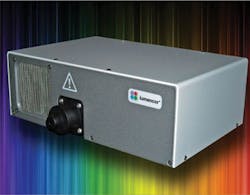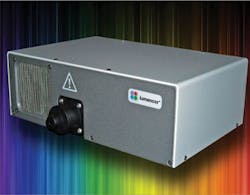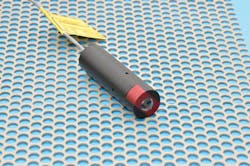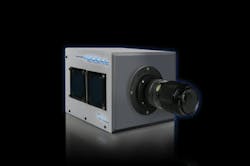Delete - Don't Use
Compiled By LEE MATHER
Please send your new product announcement to [email protected]
Solid-state white light engine
An alternative to arc lamps, the SOLA solid-state light engine produces continuous white light from 380 to 680 nm for imaging common fluorophores and fluorescent proteins. Compatible with all filter cubes and microscope configurations, the light engine offers a >15,000 hr lifetime and UV- and IR-free light. Integration with a camera enables light blanking during frame readout, prolonging sample life and minimizing photobleaching during sample illumination.
Lumencor, Beaverton, OR, http://bit.ly/tf11fr
Green lasers for surgical applications
The PNF Series green lasers deliver 20 or 45 mW output power with a 515 nm wavelength for surgical and X-ray alignment applications on dark or pigmented skin. Features include uniform intensity (non-Gaussian) line generators, the company’s Variable Focus Technology, high wavelength and optical power stability, and continuous-wave (CW) or optional digital/analog modulation >500 kHz.
Power Technology, Little Rock, AR, http://bit.ly/tBv9p3
Digital scientific camera
The xSCELL digital scientific camera addresses low light levels and low dark noise requirements in fluorescence imaging, spinning disk confocal microscopy, high-throughput screening, and gene sequencing. It delivers 1000 fps at a resolution of 1024 × 1024, and provides readout noise of <2 e- rms and quantum efficiency of 65%. The camera is powered by the company’s InXite CMOS technology, enabling 14 bit data delivery and internal cooling to -30°C to render the effects of dark noise to negligible levels.
Photonis, Lancaster, PA, http://bit.ly/sETdLI
Cellular imaging software
Volocity 6.0 3-D cellular imaging software provides functionality to visualize, analyze, and validate 3-D fluorescence images from a wide range of confocal microscopy, wide-field, and high content screening systems. The software organizes and relates measurements according to biological classification such as nuclei, membranes, organelles, and proteins, and also performs fluorescence recovery after photobleaching (FRAP) analysis on data not acquired by the software.




